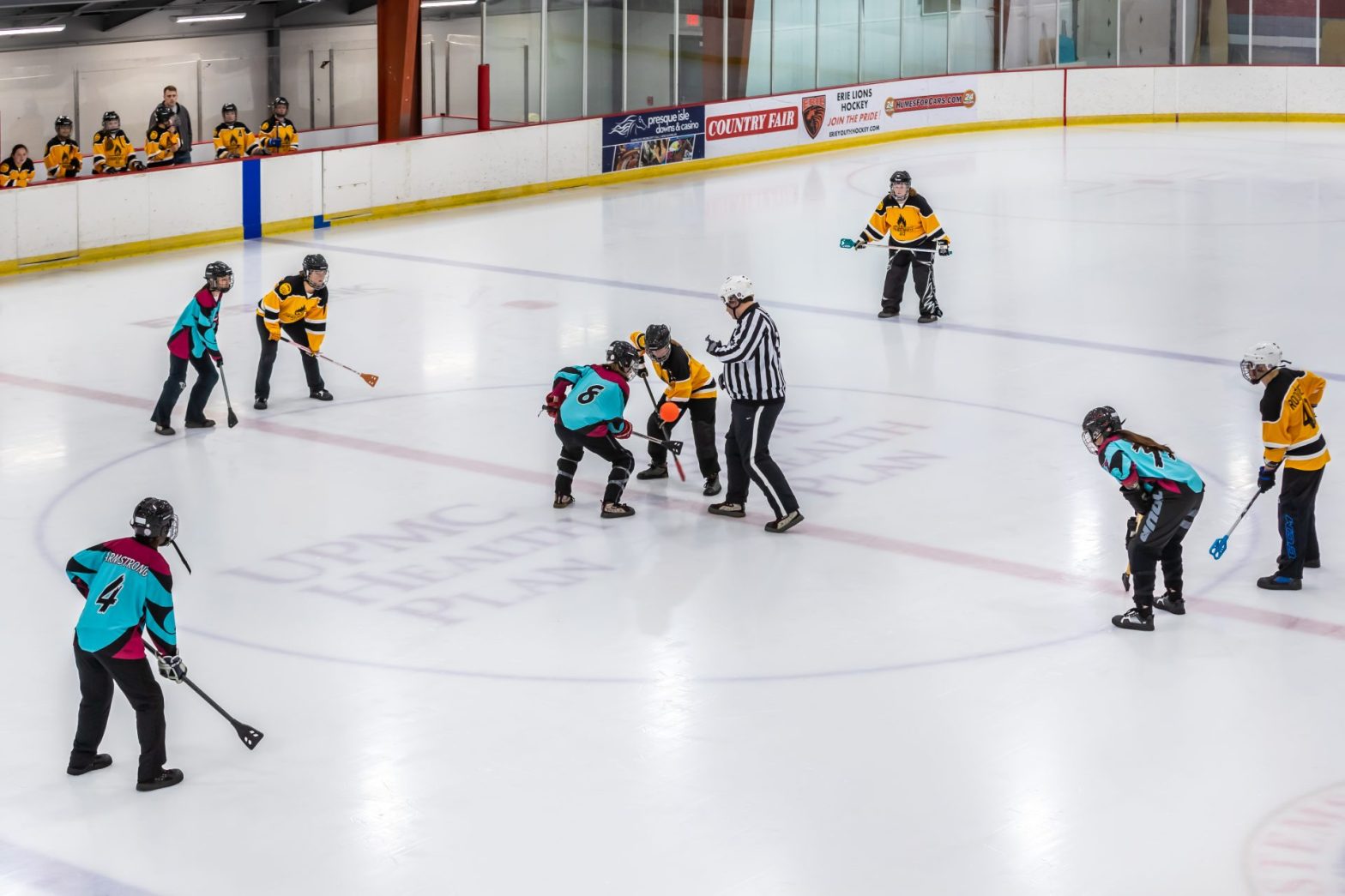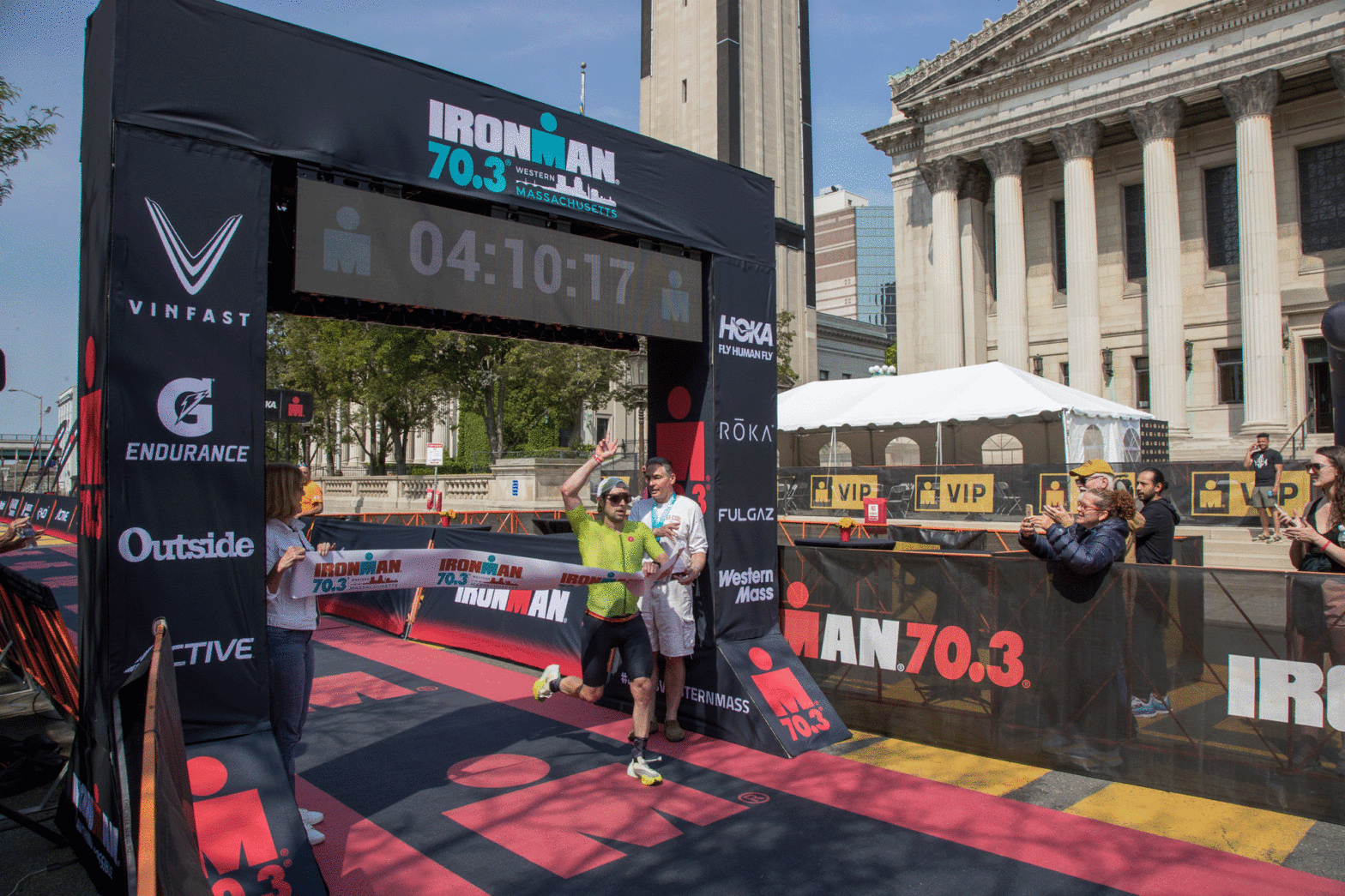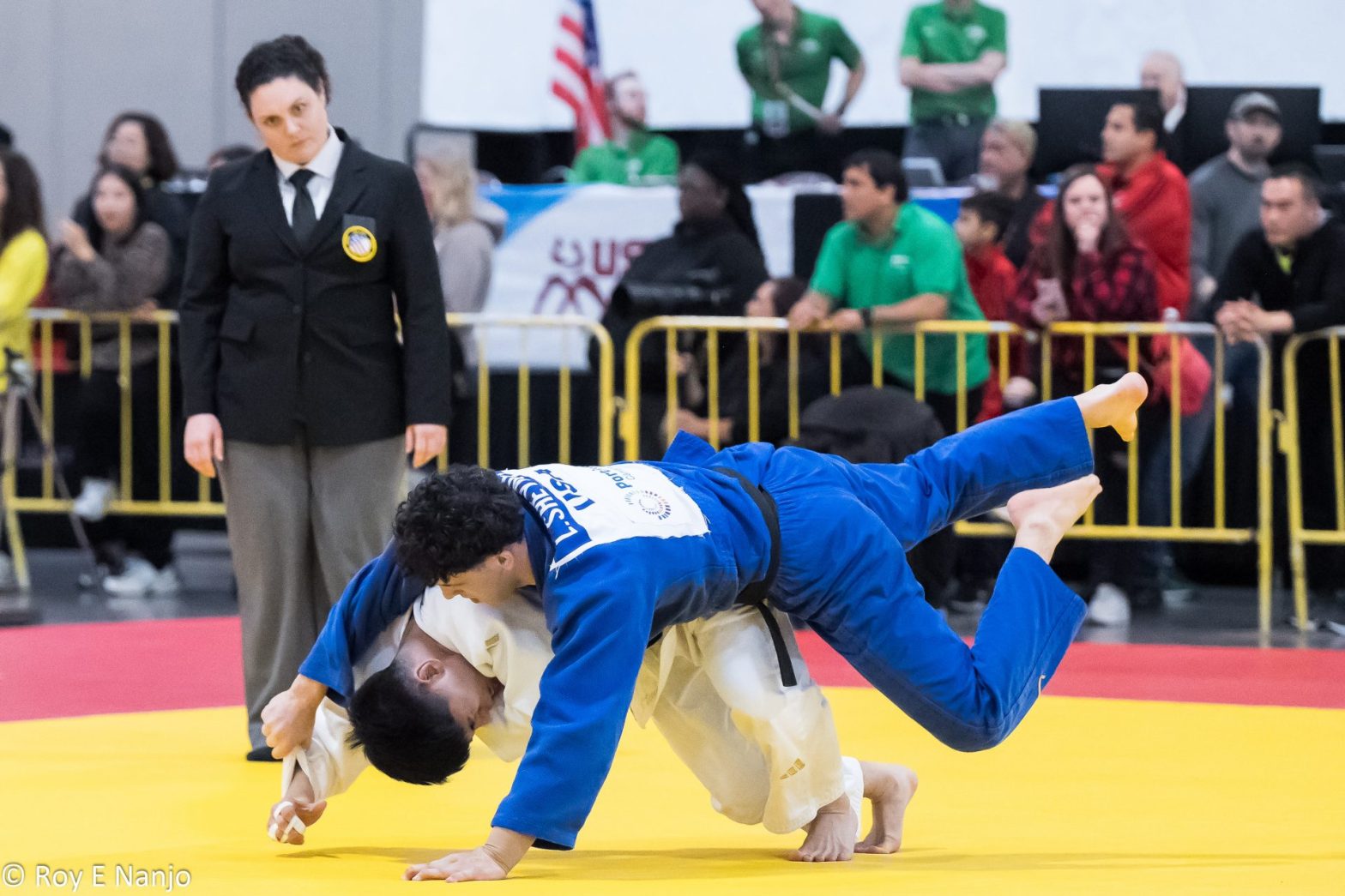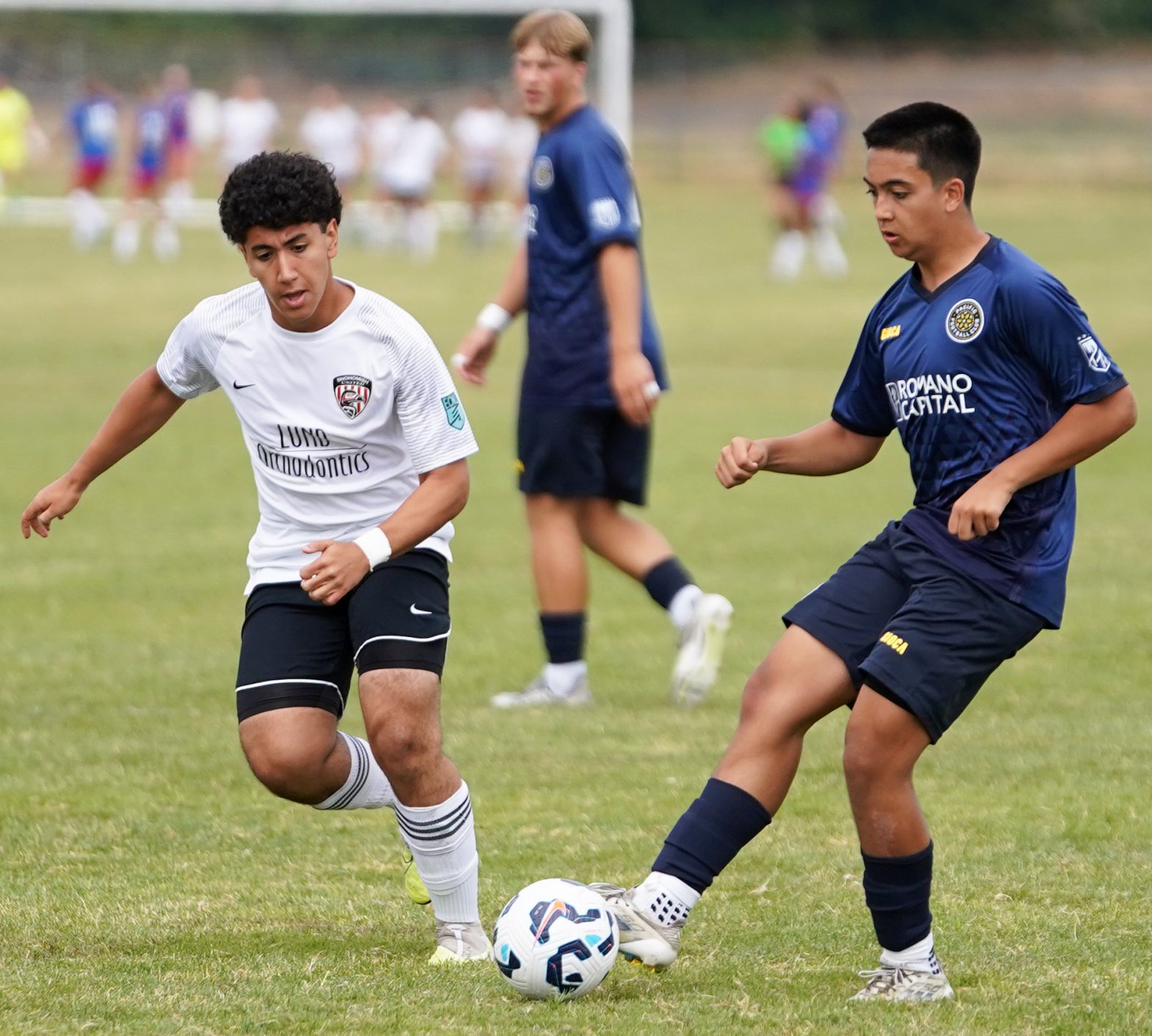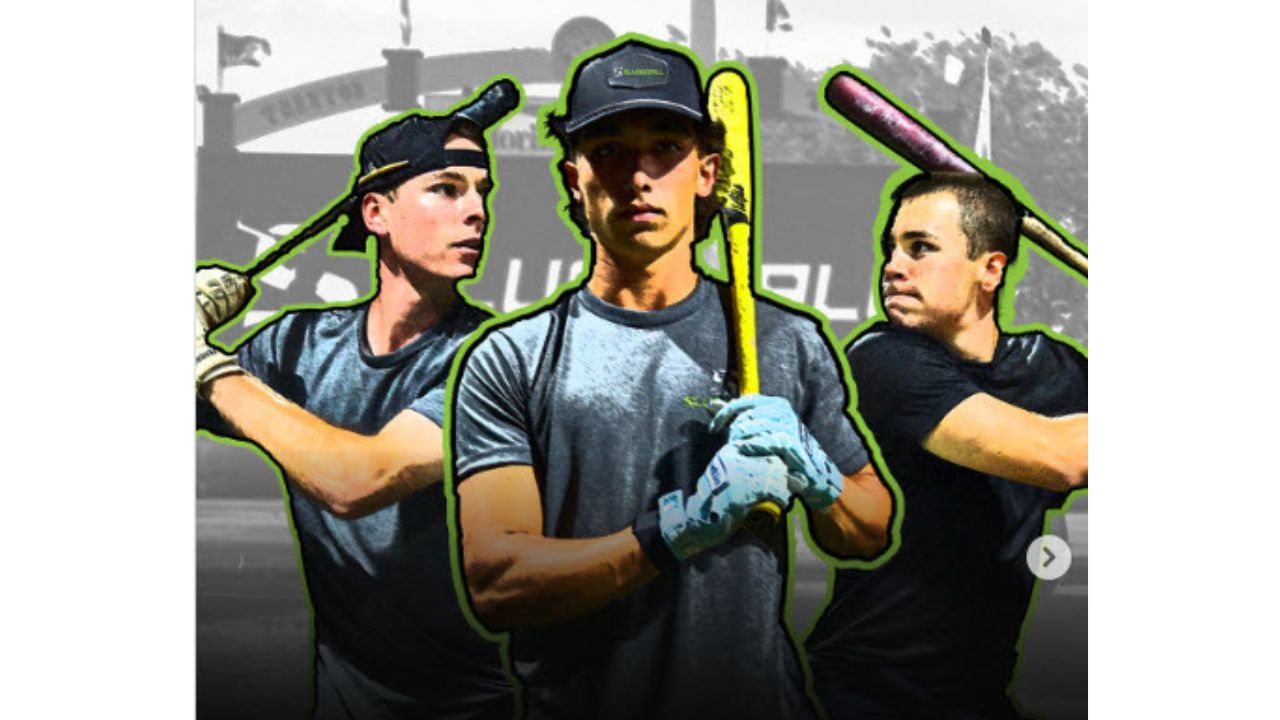Back in the 1970s and ‘80s, it was common to see diving competitions on television during weekend afternoons, as ABC’s Wide World of Sports frequently showcased the sport. Although ESPN still streams competitions and the sport is always highlighted at the Olympics, the number of viewers watching diving has significantly declined over the decades. The same holds true for live competitions, where the number of people in the crowds has shrunk in recent years, according to many event organizers.
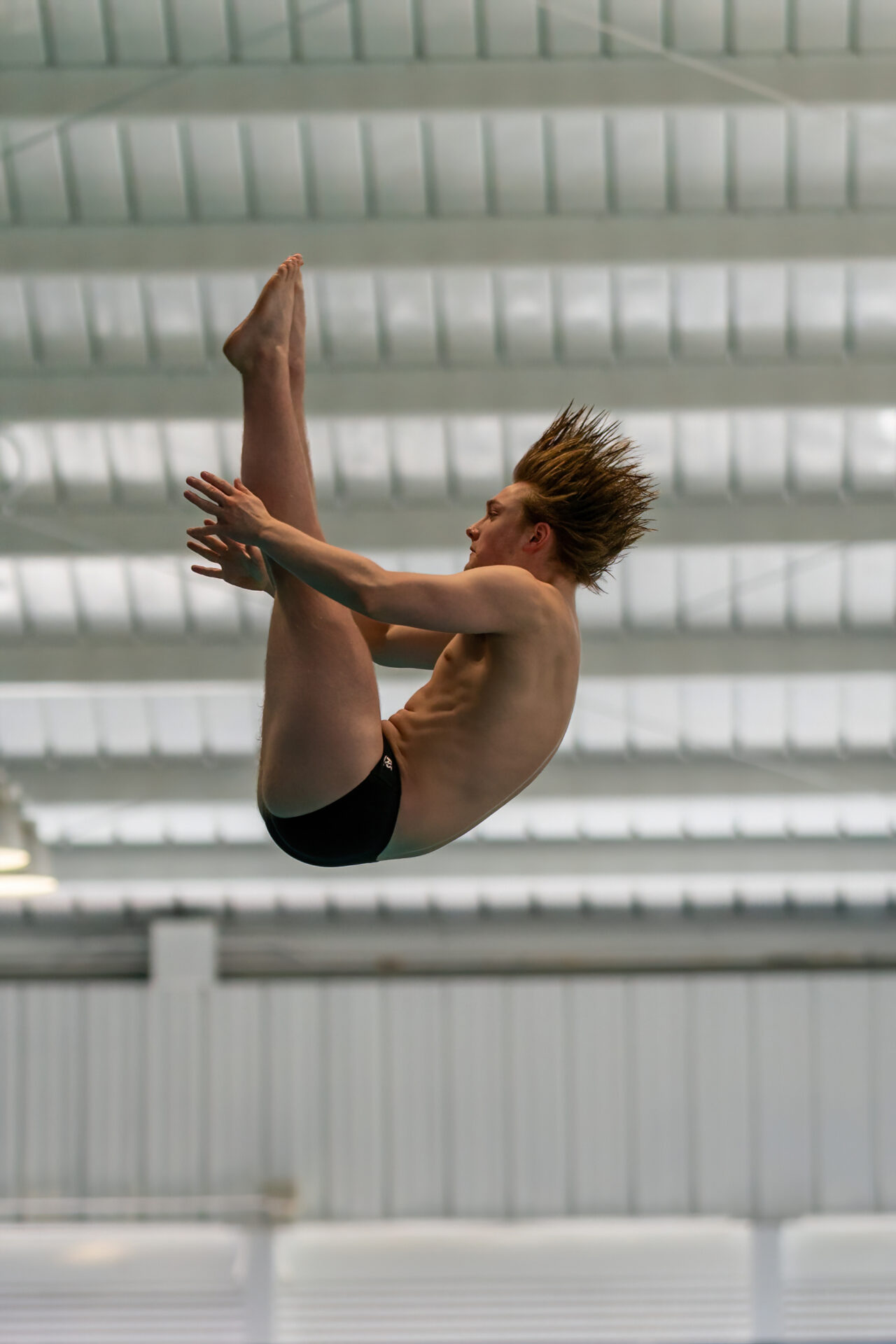
That’s why, in an effort to boost the popularity of diving competitions among wider audiences, organizers are implementing a series of innovative strategies designed to make the sport more exciting and accessible. From themed events to athlete meet-and-greets, and involving spectators more, the focus is on enhancing the in-person experience and creating a vibrant atmosphere that draws people in. To learn what they’re doing to improve their events, we spoke to divers, coaches, and organizers across the country. Follow their expert advice and you can take your next diving competition to a higher level, too.
Fan engagement
Lewis Fellinger, aquatics national chair for the Amateur Athletic Union (AAU), notes that some innovative event formats attracting people include synchronized diving competitions and skills exhibitions.
“People love platform diving, and there’s a unique energy to platform that keeps fans engaged,” he says. “Synchronized diving captures the audience as a whole. In AAU Diving, we strive to provide opportunities for divers to be showcased on a national stage in front of spectators.”
Meanwhile, John Appleman, elite and high-performance director of Mission Viejo Nadadores Diving, feels that shorter, smaller events where divers go head-to-head, with knockouts, would be more appealing to audiences. Appleman certainly knows a thing or two about successful diving competitions—aside from his role at Mission Viejo Nadadores Diving, a year-round competitive dive team, he has coached 19 Olympians and close to 200 national champions.
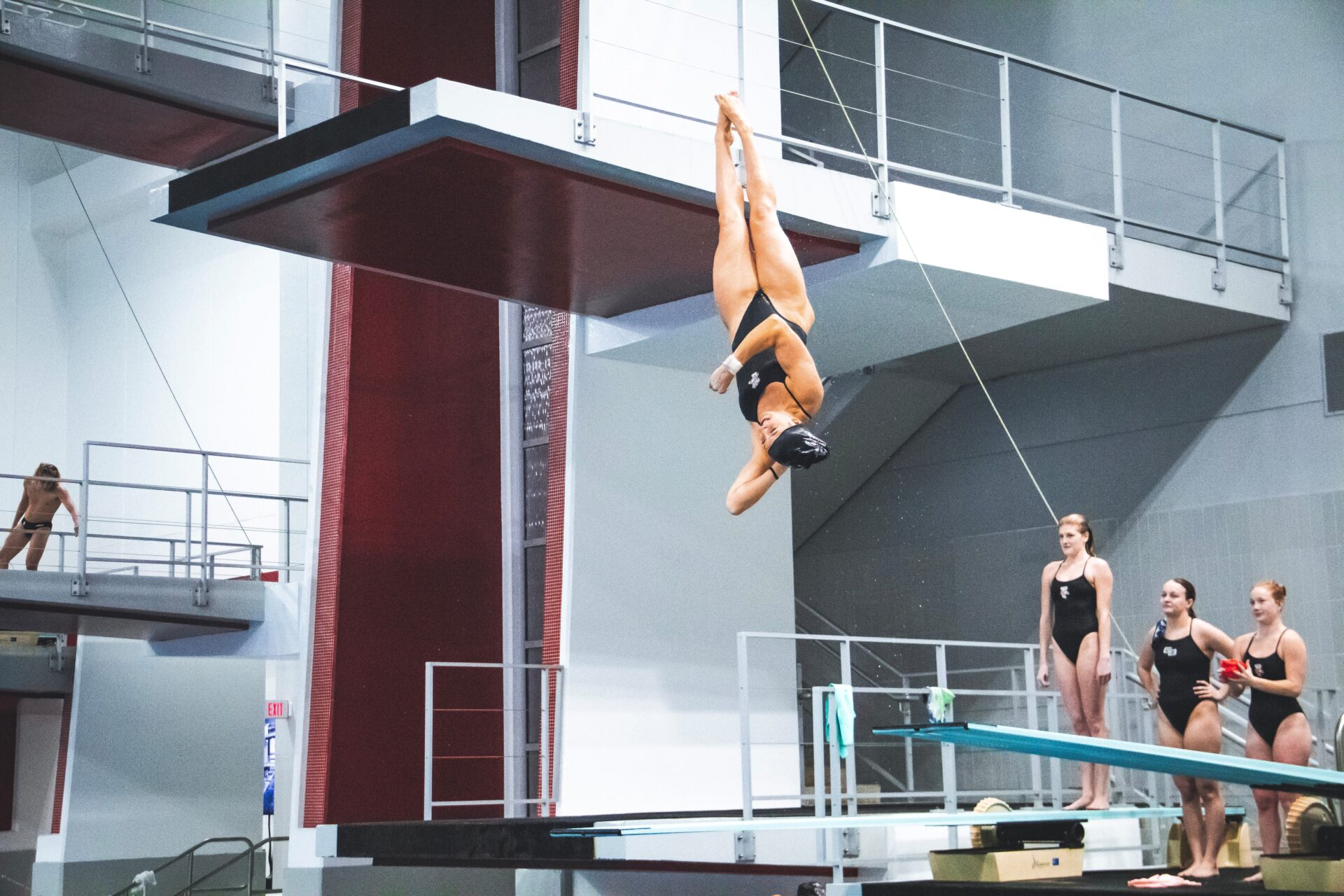
Format
The tournament style, in which divers compete directly against one another in elimination rounds, results in the loser being eliminated until only the top competitors remain. By emphasizing direct competition and quick progression, this format could create a more intense, fast-paced experience that attracts larger live audiences.
Kit Greenberg, a former University of Wisconsin-Madison D1 team captain who has earned multiple USA Diving medals, remembers a diving event that quickly became one of her favorite formats.
“Each school entered three divers, with each athlete performing two dives,” she shares. “As a team, we had to cover all six dive categories, with no more than two categories performed on each board: one-meter, three-meter, and platform. Teams strategically selected their top divers to perform their strongest dives, making for an exciting and high-level competition. It was incredibly fun to compete in and just as entertaining to watch.”
She believes that if team diving events like this were officially scored and emphasized more, they could bring a new level of engagement to the sport and make it more appealing to spectators.
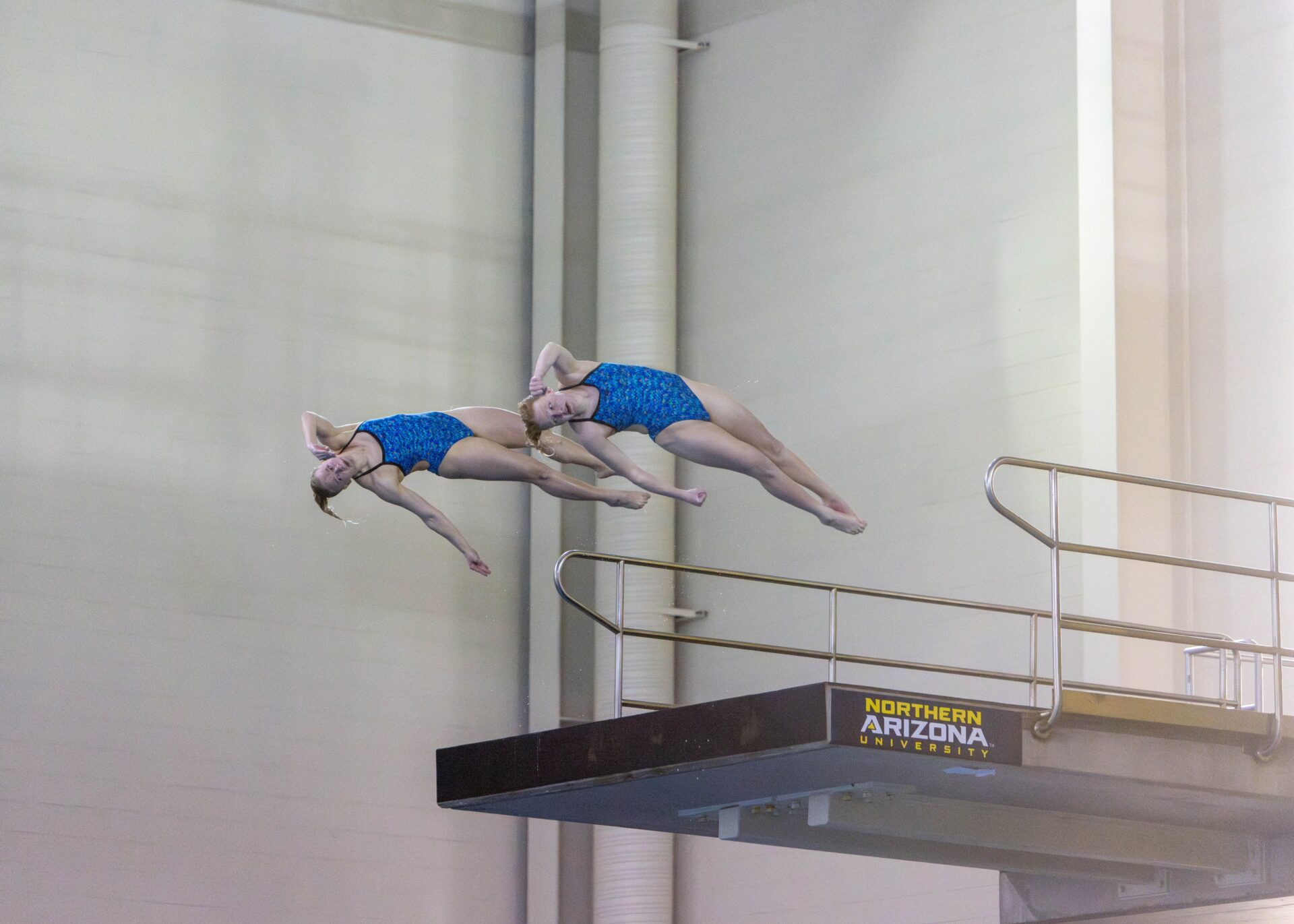
Education
Katie Kelbrants, an NCAA Division III diver at Macalester College and a member of LaunchBreak, a networking platform for over 2,000 women athletes, notes that a significant part of engagement comes from education about how diving actually works.
“Viewers lose focus when dives are introduced in a seemingly ‘new language,’” she says. “For example, a diver is up to perform a front 1½ flip. ‘101C 2.2’ is what the crowd hears before the athlete begins their dive. The numbers explain the position, direction, and amount of flips, followed by the degree of difficulty, which is a point scale. Coherence in scoring prior to any meet would be helpful to those underexposed to diving and how the scoring works.”
Nikki Kelsey, head diving coach at Northern Arizona University, has hosted her share of NCAA competitions, meets and championships through the years, and thinks there’s room for more creativity in how diving meets are structured.
“It’s not done often, but when there is a little bit different format or even different commentary that adds more background, I think those things go a long way,” she says. “One thing I have seen that has been fun is a shootout, where the divers go head-to-head and knock each other out until there is a winner. I’d like to see a little more thinking outside of the box.”
For example, at one collegiate swimming and diving dual meet that Kelsey attended, the opposing team didn’t have divers, so her squad put on what she described as a “clown-synchro” show, where she commented on the dives, and the audience found it very entertaining. “We put on a fun show,” she says.
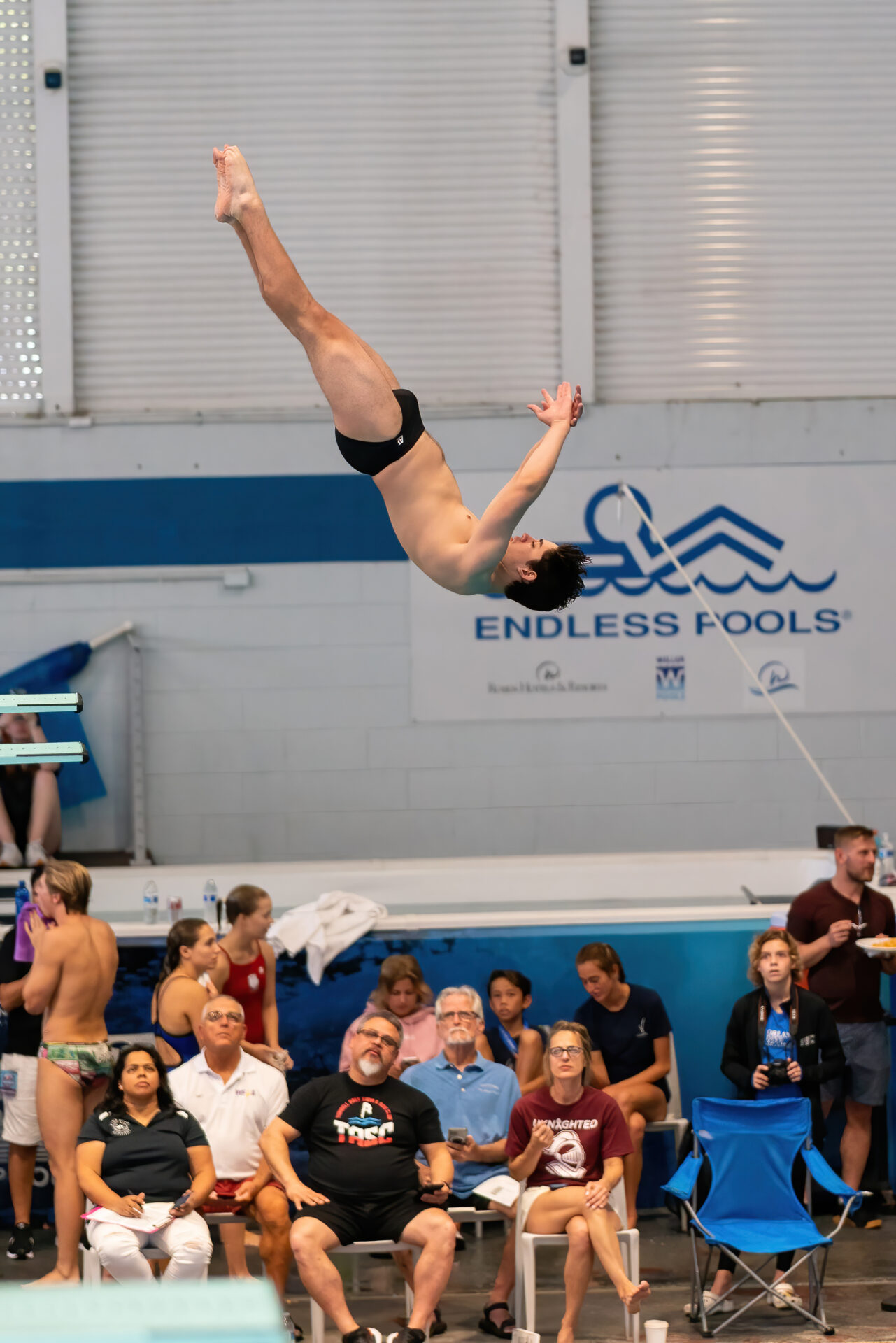
Environment
Creating a comfortable space for spectators is also essential, which involves providing a clear sightline and ensuring that crowds are protected from the elements.
“Whether it is outside and having shade from the sun or inside working with the proper temperatures, we work on making it comfortable for the athlete first and foremost, and make sure spectators are happy at the event,” Fellinger says.
AAU also works hard at creating dive meets that encompass exposure, community, and entertainment.
“Our events often include a large number of athletes, but we make sure to set a schedule that is segmented day and night to be sure that no athlete or parent is stuck in one place,” Fellinger says. “We want them to have the chance to experience these beautiful cities that we bring our events to as well.”
Audience participation
People enjoy interacting while at live events, which is why the AAU works to create a comfortable, safe environment that encourages audience participation at their diving competitions.
“We try to engage our spectators onsite but also include those who can’t attend with livestreaming of events,” Fellinger says. “We encourage parents, coaches, and supporters to use social media to join with AAU diving and share their experiences of the events.”
Appleman suggests running trivia quizzes for the audience through apps during the breaks. A question is announced, the answers are uploaded to an app, and the results are put on the scoreboard. Kelsey adds that a tailgating component before meets would be fun and perhaps bring more people to the live events.

Community involvement
Appleman says there are numerous ways to engage with the community alongside a competition that can significantly enhance participation.
“For instance, open the diving boards to the community the day before a competition,” he suggests. “Promote heavily, and those who attend the ‘open dive’ get a ticket to the competition.”
That’s why the most effective event schedules focus on maximizing peak exposure for athletes, fostering structured community engagement, and ensuring a strong entertainment flow.
“Marquee events should be held during high-traffic times, with built-in recovery and spotlight moments to elevate athlete visibility,” Greenberg says. “Community involvement thrives through open practices, clinics, or meet-and-greets scheduled around competition.”
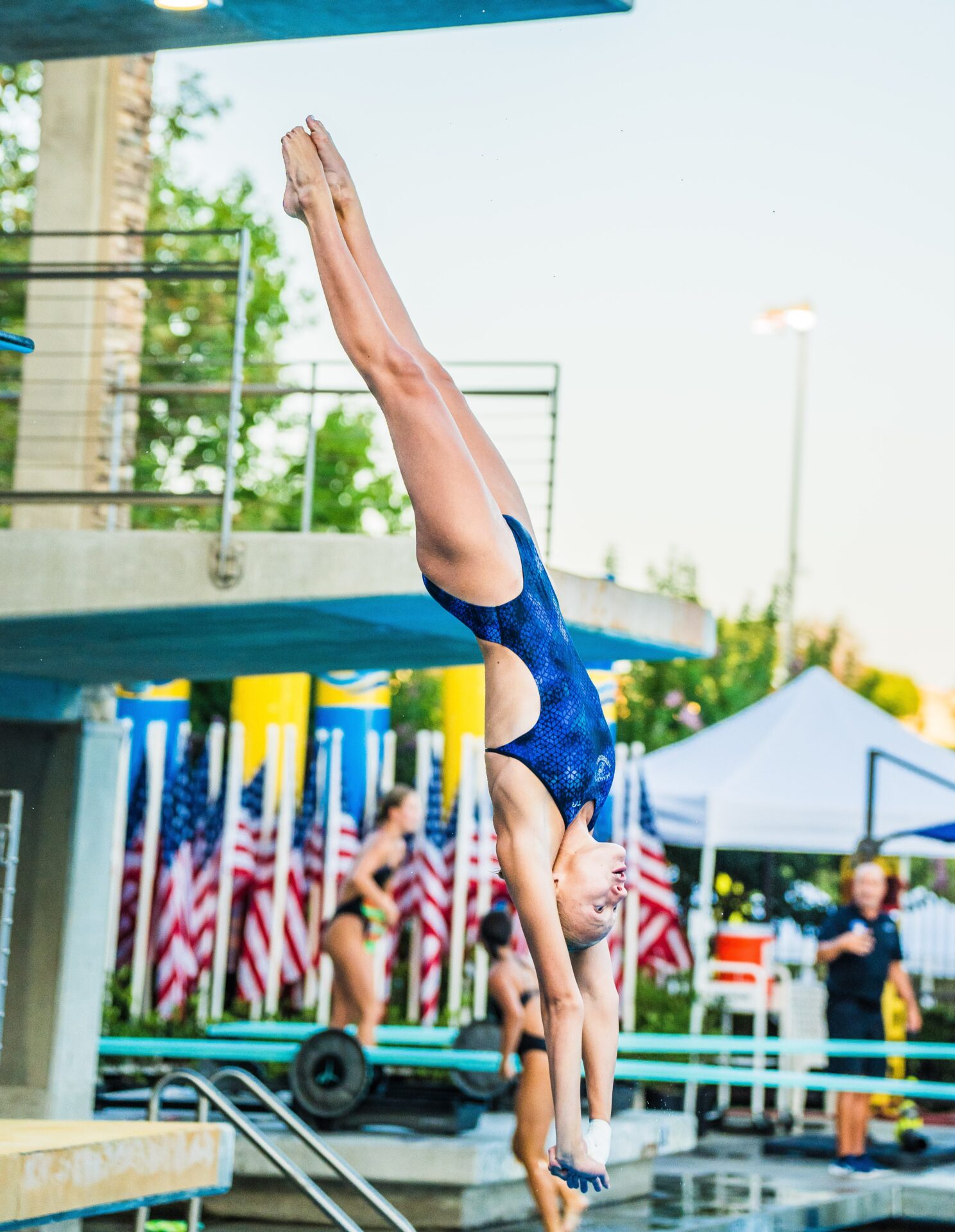
Promotion
Not surprisingly, social media is often utilized to capture the diving audience, selling the event through captivating images and engaging stories of the athletes. It’s also a great place to provide live updates of events.
“We can showcase the athletes in real time, and we can bring the sport to people who may have never seen it before,” Fellinger says. “How do we utilize popular trends and convert them to this high-level, exciting sport that we have? We showcase the athletes doing what they do best.”
For example, AAU College Showcase meets brought approximately 100 coaches on deck and an additional 500 or more watching the meet live online or viewing later. “The diver is being seen and getting a chance to continue in a sport they are passionate about at the highest level,” Fellinger says.
Engaging young audiences by promoting the stars of the sport will also help ensure the future of diving. “Offering events, like a short speech, selfies, or autographs, can help in this regard,” Appleman says. “Also, bring in recognizable names in the sport, like Tom Daley.”
Over the past year, Greenberg notes that extreme diving has gained traction on TikTok as divers flip and twist while a GoPro captures their descent to the bottom. Meanwhile, Red Bull cliff diving, which has also appeared on social media platforms, has popularized the sport over the last 20 years with locations around the world and heights of 80 to 90 feet.
“Diverse and visually striking dives are perfect for social media, especially platforms like TikTok and Instagram that thrive on short, engaging video content,” she says. “Showcasing different diving skills and formats, like synchronized dives, mixed-gender teams, or high-difficulty dives, creates dynamic clips that capture attention quickly and encourage shares. These platforms favor visually impressive moments, so varied dive types help highlight the sport’s athleticism and artistry in ways that resonate with younger, digital-native audiences.” Kelbrants adds that when top divers post behind-the-scenes content, the digital footprint of the sport grows.
“Having top athletes post day-in-the-life, what-I-eat-in-a-day, training behind the scenes and vlog-style content could be a huge turning point,” she says. “It could also inspire younger athletes to adjust their training habits, work harder, and even maintain their love of diving.”
Organizers can extend the reach and impact of a diving showcase by creating consistent, engaging content before, during, and after the event. Leading up to the competition, they can spotlight athletes with short profiles, behind-the-scenes training clips, and countdown-style posts to build anticipation.
During the event, real-time updates, highlight reels, and interactive stories or polls can keep followers engaged, including those who aren’t physically present. Afterward, sharing standout dives, results, and athlete reactions helps maintain momentum and extends the event’s digital lifespan.
“With the right strategy, social media can turn a single weekend showcase into a broader movement that grows the sport’s fan base and celebrates the athletes who make it so exciting,” Kelbrants says. And if enough people get engaged online, it’s only a matter of time before they start showing up for live events, too.



